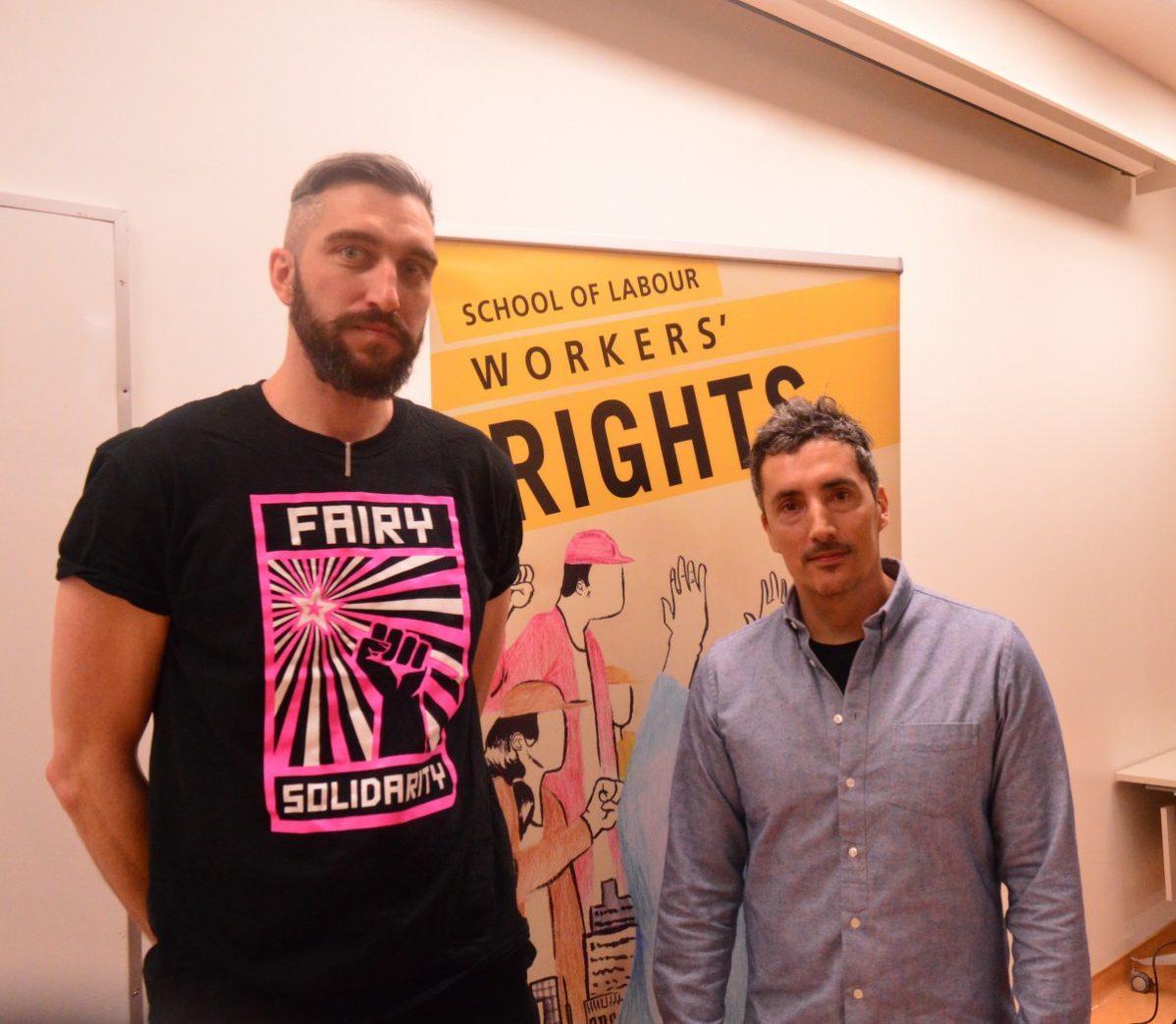Ben McCarthy tackles art and labour concerns in podcast series,Precariat Content
Art and politics seem to have almost always been entangled; nourishing, challenging and in process with each other.
Today, with workers facing a labour situation of increasingly part-time and poorly-paid jobs, many artists are creating work reflective of and resistant to the politics of now.
Ben McCarthy, a professor at George Brown College (GBC), has been playing his part in this process by hosting his Precariat Content podcast.
“We live in a labour economy that is very oriented to contract work, part-time and service industry jobs and all of these different types of work and labour conditions can be summed up under the title precariat,” McCarthy explained. “Precarity is driving people mad, it’s driving people to addiction, and making lives harder.”
McCarthy is also a sound designer and musician and the podcast marries his burgeoning political consciousness and his artistic practice.
“I see it often as a documentary effort,” he said. “As much as it is about exploring some political questions, it’s more about artists doing their work but then I always have this particular lens.”
McCarthy’s podcast series was formed during Toronto’s Mayworks Festival of Working People, two years ago, while he was recording interviews with local artists, regarding the impact of intersectionality on their careers. This concept later evolved into Precariat Content.
Listen to Precariat Content’s interview with Kent Monkman
“I think a lot of artists make work and aren’t aware of the political impact of it,” he said. “It’s important because it (art) can speak back to power, it can represent people who are underrepresented, and it can take on important political conditions.”
One such artist making politically charged creations, is celebrated Indigenous painter, Kent Monkman.
In the early stages of his career, Monkman struggled with finding his identity as an artist, especially one of Indigenous decent. Having recognized that art and art culture in North America relies almost entirely on European settlers’ perspective, Monkman embarked on a mission to redress colonial history through his work.
“It was not the art itself that I wanted to interact with, but it was the museums and how they represent this story of North America and how they represent Indigenous people,” said Monkman. “So I decided to embrace this language of painting because it has the capacity to tell stories.”
Monkman was a guest on a recent episode of Precariat Content, which was recorded at GBC, as part of the 26th Annual Labour Fair in March.
Like Monkman, many artists are embracing the reality that their work possess the ability to convey powerful social and political messages.
However, McCarthy is hesitant to take on the mantle of being an activist. He nevertheless is of the opinion that art is the true advocate against injustices.
“Somebody like Kent, who is oriented towards the paint or aesthetic, is not merely a vehicle for politics, it’s art that happens to be politically powerful,” he said.
McCarthy is currently working on a sound installation about issues faced by front-line workers for this year’s Mayworks Festival.


